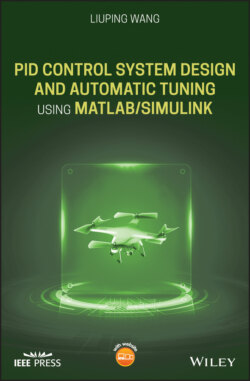Читать книгу PID Control System Design and Automatic Tuning using MATLAB/Simulink - Liuping Wang - Страница 24
1.2.5 The Commercial PID Controller Structure
ОглавлениеIn the PID controller design, the following structure is commonly used for determining the parameters , and , where the controller transfer function is expressed as
(1.41)
However, as demonstrated in this section, there are several variations in PID controller structure available for the realization of the control system, and different realization leads to different control system performance with the same set of PID controller parameters.
In order to be more flexible to the users, the commercial PID controllers (see Alfaro and Vilanova (2016)) from manufacturers such as ABB, Siemens, and National Instruments take the following general form with the Laplace transform of the control signal:
(1.42)
where the coefficients and are for the weighting on the reference signal, and as before, the coefficient determines the appropriate derivative filtering action. There are several special combinations of the parameters , , and that are commonly encountered.
1 When , , and , the PID controller becomes identical to the case shown in Figure 1.9, where the derivative control with filter is implemented on the output only.
2 When and , the PID controller becomes the IPD controller shown in Figure 1.10, where both the proportional control and derivative control are implemented on the output only.
3 When , , and , the implementation of the PID controller puts proportional control, integral control, and derivative control with filter on the feedback error .
4 When , , and , the PID controller becomes the case where no derivative filter is used in the implementation. This will severely amplify the measurement noise.
It is worthwhile emphasizing that the parameters and only affect the closed-loop response to the reference signal and they play no role in the closed-loop stability. We have examined the cases where and are either 0 or 1. However, we can extend the results to the situations where the parameters are between 0 and 1 and expect a compromised result. Upon understanding their roles, we can choose the appropriate coefficients according to the actual applications.
